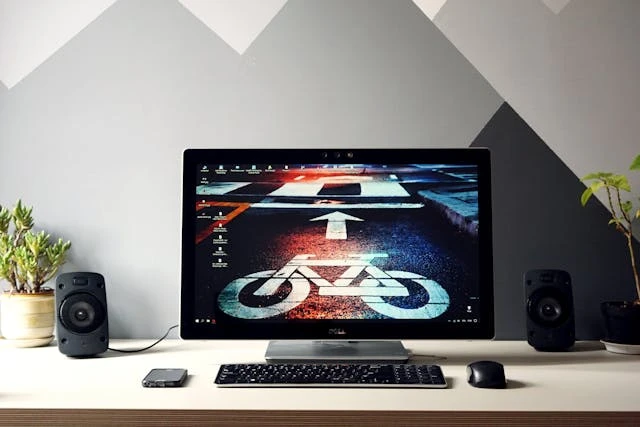
Is your Active Signal Resolution on Windows not adjusting to your set preferences? In this guide, we will show you how to change your Active Signal Resolution on Windows. If you’ve been struggling to change it, this guide is for you, so read on!
Understanding Active Signal Resolution
But just what is the Active Signal Resolution, and how does it different from the regular desktop resolution?
The regular desktop resolution is the resolution set to be displayed on your desktop. You can control it in your Windows settings.
However, the Active Signal Resolution is the actual resolution that is output from the graphics card to your screen or monitor. This sometimes differs from the desktop resolution settings. One reason this can be is due to a misconfigured graphics card. Another cause could be using several monitors, in which case the actual resolution may default to the lowest supported resolution.
How to Check Your Active Signal Resolution
To check your Active Signal Resolution, search for “Display Settings” in the Windows search tab. Then, scroll down and click on “Advanced Display.” There, you will see your Active Signal Resolution below the regular desktop resolution and can check to see if they match.
Steps to Change Active Signal Resolution on Windows
There are a few ways to change the Active Signal Resolution if it’s mismatched. First, we’ll try doing it from the Windows Settings. If that doesn’t work, then you might need to do it from your graphics card settings.
Method 1: Changing Active Signal Resolution via Windows Settings
To change the Active Signal Resolution in the Windows settings, search for “Display Settings” in the Windows search tab and click on “Advanced Display.”
Click on “Display Adapter Properties for [Display Name].” Then, click on “List All Modes.” Select your desired resolution and click on “OK” and apply your changes.
Method 2: Changing Active Signal Resolution Using Graphics Card Software
If that doesn’t work, you will need to try changing the settings in your graphics card management panel, if you have NVIDIA.
- Open the NVIDIA Control Panel.
- Navigate to Change Resolution (under Display).
- Select your monitor image.
- In the Resolution box, select your preferred resolution.
- Save your settings.
You can also try the following:
- Open the NVIDIA Control Panel.
- Navigate to Adjust Desktop Size and Position (click on the icon representing your display to see it).
- Select a Scaling Mode and choose Aspect Ratio.
- If it’s already set to Aspect Ratio, choose another option and save the settings. Then, go back and change it to Aspect Ratio again and save the settings.
- Go back to your Display Settings on Windows and change the settings there as well. You can use the steps mentioned in Method 1 here too.
Fixing Common Active Signal Resolution Issues
If the above steps didn’t work, or if you’re experiencing further issues such as a black screen after changing the resolution, not seeing the resolution available in the list of modes, or a blurry or stretched screen, I suggest uninstalling and reinstalling the graphics card driver and restarting your computer. This can often fix such issues.
You can also try playing around with different resolutions or a lower resolution to see if it helps with the problem. Finally, if you are using a very old monitor, consider upgrading to a newer one.
Choosing the Best Active Signal Resolution for Your Display
When choosing a resolution for your display, it’s important to check your monitor’s specs and make sure you are choosing a resolution that it supports.
In addition, here are some additional tips to help guide you when choosing a resolution for your display:
1920×1080 is the most popular resolution and is common for everyday tasks, including browsing, working, and gaming. Most likely, this is the resolution you should be selecting.
1366×768 is common on older laptops and monitors. It’s the minimum recommended resolution for Windows, and things won’t be so clear if you choose it, but it will still work.
3840×2160 is common on higher-end monitors, especially those marketed as 4K displays. However, keep in mind that you will need a GPU that is powerful enough for it.
Conclusion
Adjusting the Active Signal Resolution can improve your actual screen resolution and optimize your display on Windows. Follow the steps mentioned in this article to change it. Remember, however, that you should always set it to a resolution that your monitor supports, and if your monitor doesn’t support that resolution, consider getting a monitor that does.








